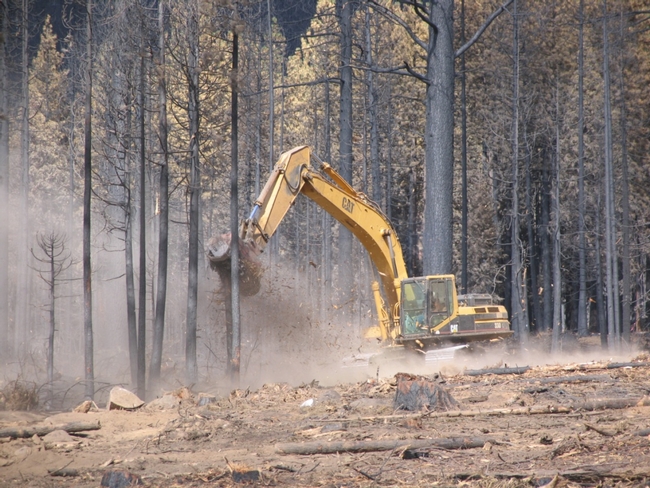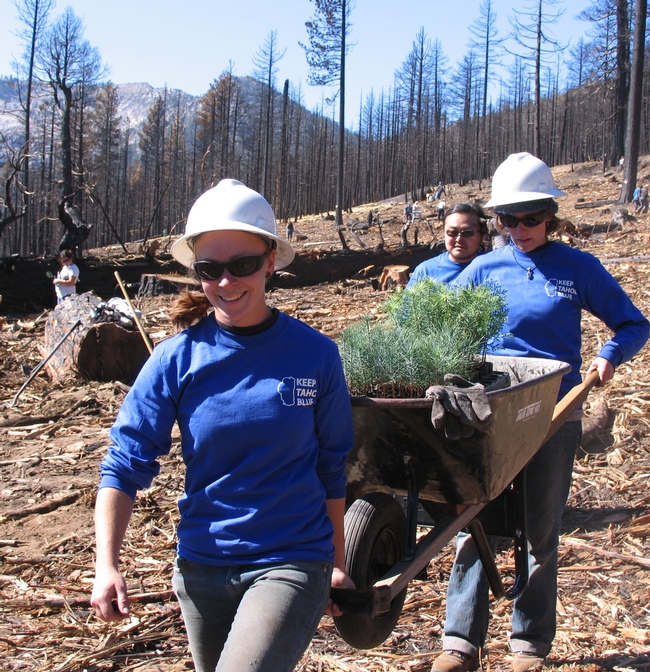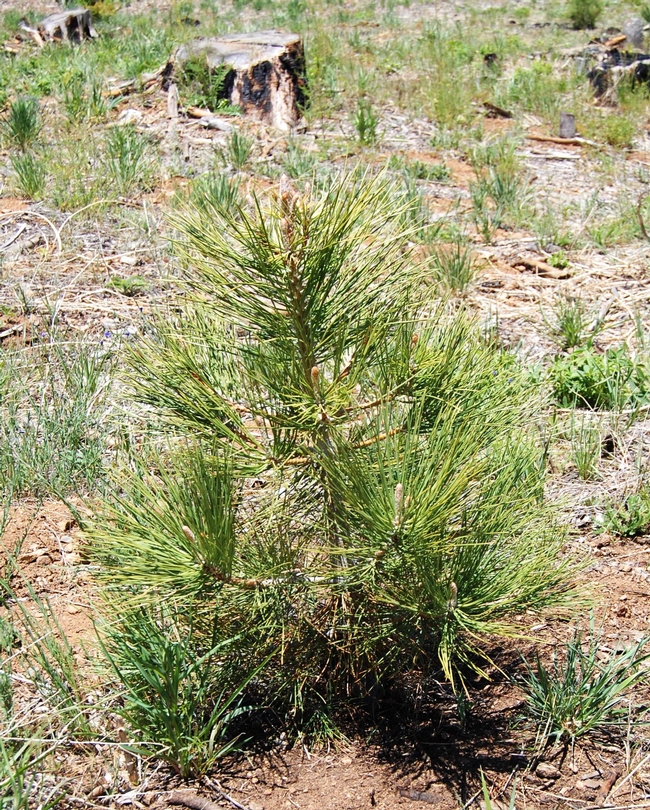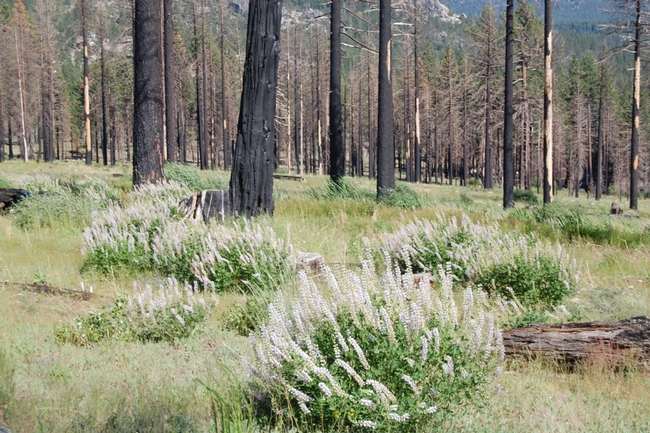
Forest lands may benefit from active restoration after wildfire

For high severity burns where very few or no live trees remain to provide seed for the next generation, forest recovery can take a very long time. Typically forest landowners want to restore their lands to a forested condition as quickly as possible. In that case, an active approach can help them reach their goal sooner.
The California Tahoe Conservancy has just released a report on the outcomes of active restoration of 40 acres of Conservancy lands where all trees were killed by the 2007 Angora fire in South Lake Tahoe. That fire burned 3,100 forested acres as well as 250 homes.

The report's authors estimate this active approach has hastened the return to a forested condition in the area by about 60 years. This is because planted seedlings are growing quickly while there are few naturally sprouting tree seedlings in adjacent untreated areas and these face competition from vigorously growing native brush that was stimulated by the wildfire. Soil monitoring showed no compaction by heavy equipment during tree removal and minimal soil erosion. Woody mulch left on site was also effective at suppressing brush to give newly planted tree seedlings a competitive edge.
Landowners looking for guidance on post-fire forest management are encouraged to download the free UC Cooperative Extension publication “Recovering from Wildfire: A Guide for California Landowners” and consult the UC Center for Forest Research and Outreach website at http://ucanr.edu/forestry.





This is nice blog with nice picture.
Thank you for sharing this blog with us.
Posted by Forestry on September 20, 2012 at 4:01 AM